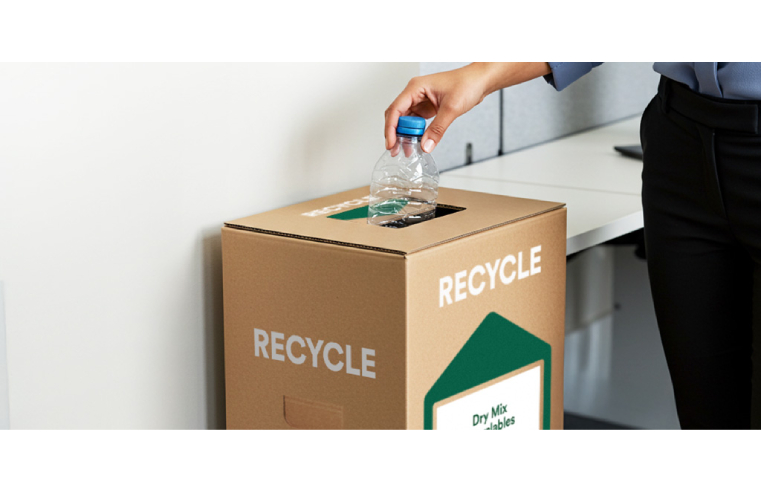Please note: (number) denotes reference point proceeding the article.
The COVID-19 pandemic has increased consumer awareness around the importance of hand hygiene and the risks posed by the spread of germs. Nearly 95% of adults do not wash long enough to thoroughly clean the bacteria and viruses from their hands, so germs can remain on hands after washing (1).
While there has been a focus on regular and adequate hand washing, Kimberly-Clark Professional is asking: ‘How do you dry your hands?’
“Science proves that paper towels are the most hygienic option for hand drying, but the dangers presented by alternative drying methods raise concerns,” said Steve Jones, General Manager UK & Ireland, Kimberly-Clark Professional.
“Jet-air dryers can spread germs and unhealthy bacteria if they are present on wet hands. In these unprecedented times, tackling every germ hotspot is critical for providing a safer and more hygienic environment. We believe it is important that people are fully-informed of the hygiene risks presented by jet-air dryers and are aware of the science of hygiene before they use or purchase an air dryer.”
What’s flying under the radar?
A jet-air dryer blows water droplets that can contain germs from the hands into the air as far as two metres (2). Those aerosolised bacteria can linger in the air for up to 15 minutes. In fact, the science shows that jet-air dryers can increase levels of bacteria on fingers by up to 42% (3). Therefore, it is no surprise that paper towels are the recommended hand-drying method of the World Health Organization 'Guidelines on Hand Hygiene in Health Care'.
Using Scott Hand Towels will leave your hands and washroom cleaner than air dryers, even with the use of HEPA filters and diligent cleaning of air dryers. In fact, using a jet air dryer can disperse 1,300 times more germ particles than drying with paper towels (4).
Research shows even after 15 minutes, 100 times more particles remain in the air when using jet-air dryers versus single-use paper towels (5), which alarmingly could end up at approximately the height of a small child’s face (6). Drying with paper towels reduces bacteria on fingers by up to 77% (7).
Research shows that the inner surfaces of jet air dryers can have up to 48 times more bacteria than the average toilet seat (8). Findings from a University of Westminster study found high-speed and warm air-dryers can harbour bacteria on surfaces and inside dryers. This could lead to cross contamination if users reach inside and touch the surface of the unit or that bacteria could be carried in the airstream and deposited on wet hands (9).
Paper towels are critical to proper hand hygiene, as they offer the best solution when it comes to both hand and overall washroom hygiene. Compared to jet-air dryers and other hand drying options, single-use paper towels are recommended by the World Health Organization (WHO) and the Mayo Clinic Proceedings as the best hand drying method for good hand hygiene (10).
“Our position on jet-air dryers is informed by these and other facts supported by some of the world’s leading public health organisations. The facts speak for themselves”, said Jones.
Interestingly, despite the increase of jet air dryers across the world, a recent observational study found that 90% of people using washrooms prefer paper towels when given the choice between single-use paper towels and jet air dryers (11). Indeed, a recent study showed that paper towels consistently out-performed all other drying techniques, especially with regard to bacteria left on the palms and fingertips (12).
Jones concluded: “With the current focus on the importance of hand hygiene, we think it is critical to share the facts, based on scientific studies, so customers can make informed decisions. Consider your hand hygiene throughout the day and how many things you touch – from car steering wheels to lift buttons. Ask not just how many times you have washed and dried your hands – but how have you washed and dried your hands and for how long? The science is clear – and the official guidelines from WHO are clear: ‘dry hands thoroughly with a single-use towel; use the towel to turn off the tap; your hands are now safe’.” (13)
https://home.kcprofessional.com/UK_PR_JAD_GS_0121
References
(1) - Borchgrevink, C.P., Cha, J. and Kim, S., 2013. Hand washing practices in a college town environment. Journal of environmental health, 75(8), p.18.; Hand Washing Practices in a College Town Environment, Journal of Environmental Health; https://www.cdc.gov/mmwr/PDF/rr/rr5116.pdf: Boyce JM, Pittet D, Centers for Disease Control Guideline for hand hygiene in health-care settings. Recommendations of the healthcare infection control practices advisory committee and the HICPAC/SHEA/APIC/IDSA hand hygiene task force. Society for Healthcare epidemiology of America/Association for professionals in infection control/infectious diseases Society of America. MMWR Recomm Rep. 2002;51 (RR–16):1–48.
(2,4,5) - P.T. Kimmitt & K.F. Redway, “Evaluation of the Potential for Virus Dispersal During Hand Drying: A comparison of Three Methods,” Journal of Applied Macrobiology 120 (2016)
(3) - Eurofins-Inlab study (2012)
(6) - E.L. Best, K. Redway, “Comparison of Different Hand-Drying Methods: The Potential for Airborne Microbe Dispersal and Contamination,” Journal of Hospital Infection 89 (2015)
(7) - University of Westminster, “Changes in the number of different types of bacteria on the hands before and after drying using paper towel, continuous cloth roller towel, warm air dryer and jet air dryer” (2010)
(8) - Eurofins-Inlab study (2012)
(9) - University of Westminster, “Changes in the number of different types of bacteria on the hands before and after drying using paper towel, continuous cloth roller towel, warm air dryer and jet air dryer” (2010)
(10) - Huang C, Ma W, Stack S, “The Hygienic Efficacy of Different Hand-Drying Methods: A Review of the Evidence,” Mayo Clinic Proceedings, 2012; 87(8): 791-798. And World Health Organization ‘Global Hand Washing Guidelines’
(11) - ETS Observational Study, ISSA/Interclean Amsterdam (May 2016)
(12) - Snelling AM, Saville T, Stevens D, Beggs CB, “Comparative evaluation of the hygienic efficacy of an ultra-rapid hand dryer vs conventional warm air hand dryers,” Journal of Applied Microbiology 2010; 110: 19-26
(13) - World Health Organization, Global Hand Washing Guidelines



































